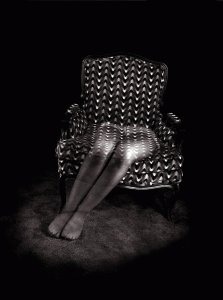« Reviews
Robert Zuckerman
Hardcore Art Contemporary Space - Wynwood Art District, Miami
May 30 - August 1, 2009
The Kid in a Candy Store: The Storyteller’s Crossroads
By Joaquín Badajoz
Since its early beginning, photography has expressed itself like a magical trip, one that preserves memories and brings the ghosts of the past back to the future. Within this logical architecture, the camera represents a “black box” of sorts that feeds from reality, which is then reproduced in a reliable form, thus creating a complex synthesis of time gone by, except that it is not the world in its totality which is captured by the camera, but a mere sum of subjective fragments as perceived by the eyes and then, as details permeated by the inner human landscape. Therefore, the past displaced to the future by the photographer’s artistic sensibility comes to the flow of the ongoing present, turning the camera into a virtual “TIME MACHINE.” That seems to be the meaning of the homonymous exhibition by acclaimed photographer Robert Zuckerman, opened from May 30 to August 1, 2009 at Hardcore Art Contemporary Space (HACS) in Miami’s Wynwood Art District.
Even in our visual universe, in which photography is the best and most economic resource of expression, as accessible and ordinary as sight itself, the most genuine act of creation comes together with a subtle and singular talent for the public’s astonishment. That is the bottom line of the anthological exhibition that displays a collection of 35 photo prints taken by Zuckerman throughout more than three decades, arranged in a curatorial timeline that starts with a phantasmagoric woman inviting us to venture into a pictorial journey of the surreal America: the land of colorful roadside signs, suburban landscapes, pop culture, kind-looking people and movie billboards. The latter is another passion of Zuckerman, a celebrated photographer in the entertainment industry who has lent his talent to help launch many blockbusters, collecting praise from actors and producers alike ––Will Smith once referred to him as “Picasso.”
Zuckerman’s photography is consubstantial with the aesthetic of American photography, showing the same interest in the aforementioned roadside signs, faces and urban landscapes as many great photographers before him, such as Walker Evans, among many others. But contrary to Evans’ non-subjective use of the camera, Zuckerman has been able to accomplish a subjective approach to the world before his eyes with a deeper level of immersion, since the photorealism of the documentary world of Zuckerman bears plenty of emotion. This may explain why his early work seems more focused and fascinated by urban landscapes, which then developed further in amazing portraits and human details, such as the striking picture of a breast-feeding mother and her toddler that closes the photographic trip. The unveiling of the supra-real universe surrounding us is what makes Zuckerman’s exhibition a visual epiphany.
Despite the fact that it is easy to be seduced at first sight by the artwork in “TIME MACHINE,” I would also encourage you to get your own copy of Zuckerman’s book Kindsight: Images and Words from the Flow (Channel Photographics, 2005), a dramatic compilation of pictures and testimonies that shows the kindness and interest of the artist as a photodocumentalist of American life, its richness and everyday complexity.
That, in itself, constitutes the most palpable evidence that Zuckerman is a genuine storyteller. A man who likes to be involved with the emotional histories behind any photogenic scenario or living creature; a photographer not only aware of the aesthetical angle, but always involved in capturing photography’s human side. His vast experience in the cinematic industry may be partly responsible for these excellent inventive pictures, photomontages and experimentations. Witness an ethereal woman’s legs resting on a chair, or a translucent hand vainly and desperately trying to grip a collection of books in Hebrew, the expression of a man grasping for his own ancestors and identity.
Zuckerman has relied since his early years as a photographer on the “magic box with the power to create images (…) to access and connect the inner and the outer worlds,” as he acknowledged in his foreword for this exhibition. In time, he turned his appreciation for artistic photography into a personal obsession after hearing Sam Wagstaff state that, “There are not bad subjects, only bad photographers” during a lecture by the renowned photography collector and curator back in the 70s. The man who now points the camera at these captivating subjects is still the kid who lives perpetually amazed by the surrounding world. And like every other “kid in a candy store,” his backpack is overflowed with the very essence of life as time goes by.
Joaquín Badajoz: Writer, journalist, independent art critic and curator; member of the North American Academy of the Spanish Language (ANLE).
Filed Under: Reviews



































